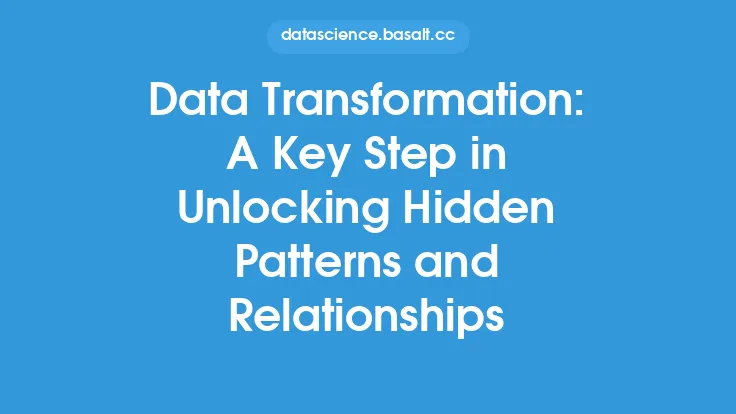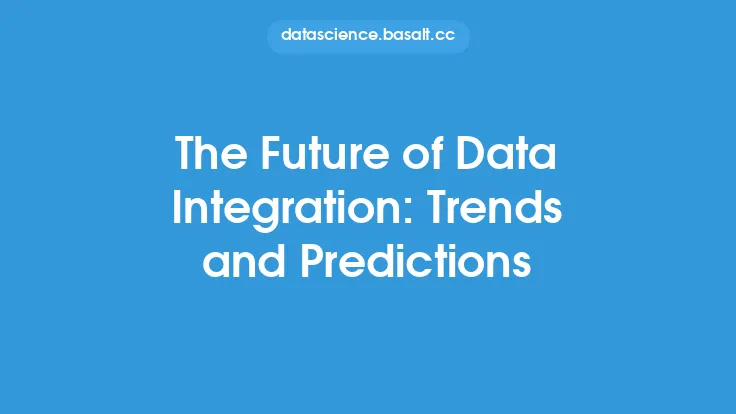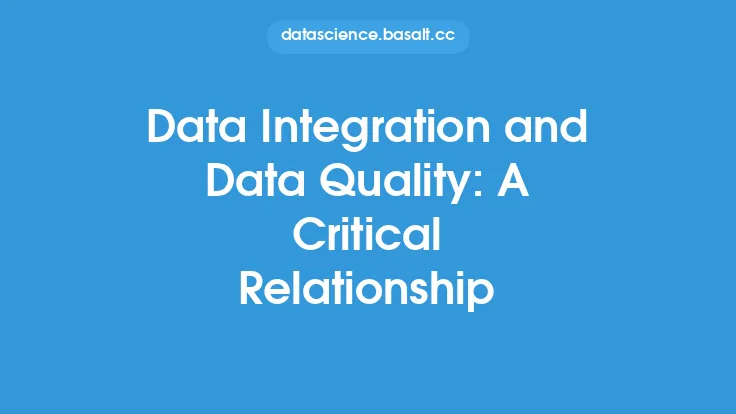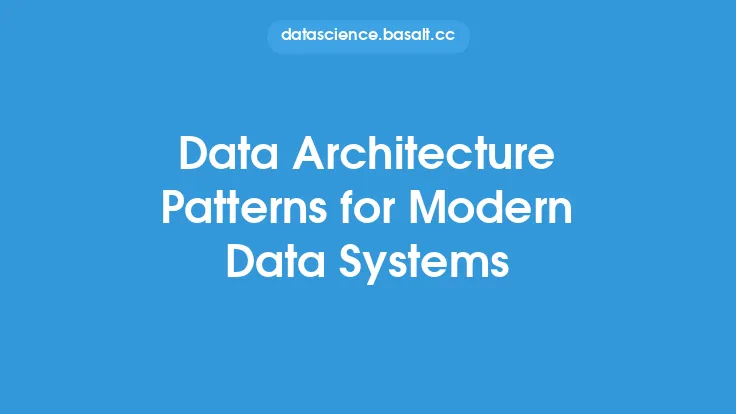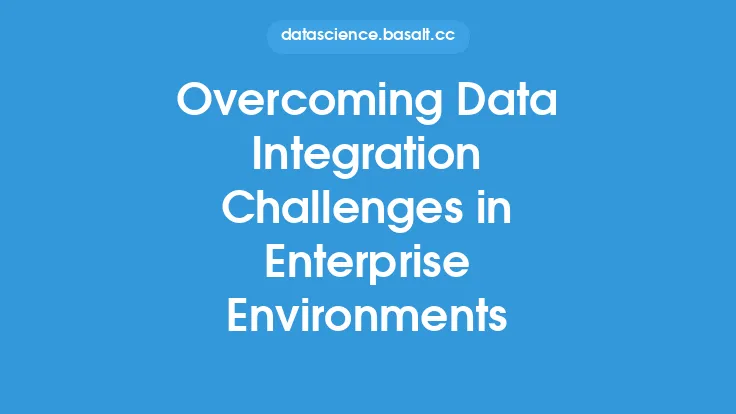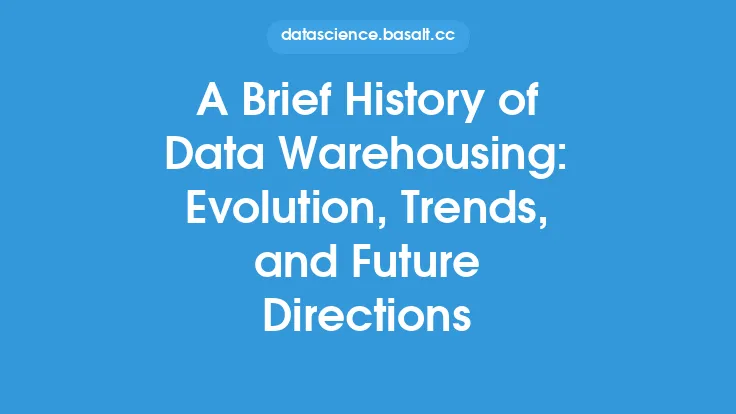Data integration is a critical component of modern data engineering, as it enables organizations to combine data from multiple sources and provide a unified view of the information. This is essential for making informed business decisions, improving operational efficiency, and gaining a competitive edge. At the heart of data integration are various patterns and architectures that facilitate the flow of data between different systems, applications, and repositories. In this article, we will delve into the world of data integration patterns and architectures, exploring their characteristics, benefits, and applications.
Introduction to Data Integration Patterns
Data integration patterns refer to the standardized approaches used to integrate data from multiple sources. These patterns provide a framework for designing, implementing, and managing data integration solutions. They help organizations to overcome the challenges of data silos, disparate data formats, and complex data relationships. Some common data integration patterns include data warehousing, data virtualization, data federation, and data replication. Each pattern has its strengths and weaknesses, and the choice of pattern depends on the specific requirements of the organization.
Data Integration Architectures
Data integration architectures refer to the overall design and structure of the data integration solution. They encompass the various components, interfaces, and protocols used to integrate data from multiple sources. A well-designed data integration architecture should be scalable, flexible, and maintainable. It should also provide real-time or near-real-time data integration, depending on the requirements of the organization. Some common data integration architectures include hub-and-spoke, point-to-point, and service-oriented architecture (SOA). Each architecture has its advantages and disadvantages, and the choice of architecture depends on the specific needs of the organization.
Data Warehousing Architecture
Data warehousing is a popular data integration pattern that involves storing data from multiple sources in a centralized repository. The data warehouse serves as a single source of truth, providing a unified view of the data. The data warehousing architecture typically consists of three tiers: the source tier, the integration tier, and the presentation tier. The source tier includes the various data sources, such as databases, files, and applications. The integration tier includes the data integration tools and technologies used to extract, transform, and load (ETL) the data into the data warehouse. The presentation tier includes the data warehouse itself, as well as the various tools and technologies used to access and analyze the data.
Data Virtualization Architecture
Data virtualization is a data integration pattern that involves providing a virtualized view of the data, without physically storing it in a centralized repository. The data virtualization architecture typically consists of a virtualization layer, which sits between the data sources and the data consumers. The virtualization layer provides a unified view of the data, and allows data consumers to access the data without knowing the underlying data sources. Data virtualization is particularly useful for organizations that need to integrate data from multiple sources in real-time, without the need for physical data storage.
Data Federation Architecture
Data federation is a data integration pattern that involves integrating data from multiple sources, without physically storing it in a centralized repository. The data federation architecture typically consists of a federation layer, which sits between the data sources and the data consumers. The federation layer provides a unified view of the data, and allows data consumers to access the data without knowing the underlying data sources. Data federation is particularly useful for organizations that need to integrate data from multiple sources, while maintaining the autonomy of each data source.
Data Replication Architecture
Data replication is a data integration pattern that involves copying data from one source to another, in order to provide a unified view of the data. The data replication architecture typically consists of a replication layer, which sits between the data sources and the data consumers. The replication layer provides a unified view of the data, and allows data consumers to access the data without knowing the underlying data sources. Data replication is particularly useful for organizations that need to integrate data from multiple sources, while maintaining high availability and scalability.
Service-Oriented Architecture (SOA)
Service-oriented architecture (SOA) is a data integration architecture that involves providing a standardized interface for accessing and integrating data from multiple sources. The SOA architecture typically consists of a service layer, which provides a standardized interface for accessing and integrating data. The service layer sits between the data sources and the data consumers, and provides a unified view of the data. SOA is particularly useful for organizations that need to integrate data from multiple sources, while maintaining flexibility and scalability.
Microservices Architecture
Microservices architecture is a data integration architecture that involves breaking down the data integration solution into smaller, independent services. Each service is responsible for a specific function, such as data extraction, transformation, or loading. The microservices architecture provides a high degree of flexibility and scalability, as each service can be developed, deployed, and maintained independently. Microservices architecture is particularly useful for organizations that need to integrate data from multiple sources, while maintaining high availability and scalability.
Event-Driven Architecture (EDA)
Event-driven architecture (EDA) is a data integration architecture that involves using events to trigger the integration of data from multiple sources. The EDA architecture typically consists of an event layer, which provides a standardized interface for publishing and subscribing to events. The event layer sits between the data sources and the data consumers, and provides a unified view of the data. EDA is particularly useful for organizations that need to integrate data from multiple sources in real-time, while maintaining high availability and scalability.
Conclusion
In conclusion, data integration patterns and architectures are critical components of modern data engineering. They provide a framework for designing, implementing, and managing data integration solutions, and enable organizations to combine data from multiple sources and provide a unified view of the information. The choice of data integration pattern and architecture depends on the specific requirements of the organization, and should be based on factors such as scalability, flexibility, and maintainability. By understanding the various data integration patterns and architectures, organizations can make informed decisions about their data integration strategy, and provide a solid foundation for making informed business decisions, improving operational efficiency, and gaining a competitive edge.
